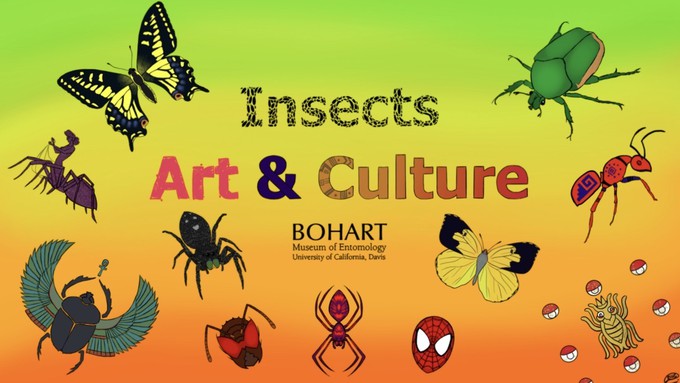
Loomis in the spotlight with compost class, High-Hand Nursery event

The Bohart Museum of Entomology celebrates insects in art and culture during its Saturday event. Bohart Museum of Entomology, UC Davis
Another busy October weekend! In addition to the Sierra Foothills Rose Show, which we wrote about earlier this week, these gardening and outdoor events are on tap Saturday:
– Free composting workshop, 10:30-11:30 a.m. Saturday at the Loomis Library, 6050 Library Road, Loomis. The Placer County master gardeners will present the basics of backyard composting and how it can improve the soil. Learn how to get started and keep the compost pile healthy.
— Special talk on “Plants, Insects and Art: Mary Foley Benson's Scientific Illustrations,” 11 a.m. Saturday at the Teaching and Learning Complex (TLC) Building on the UC Davis campus. This event is part of Spirit Week for Aggie students, parents and alumni, but all are welcome. Srđan Tunić, a candidate for an M.A. in art history and an associate at the Bohart Museum of Entomology at UC Davis, will highlight the work of the late artist (1905-1992) and the collection of her work owned by UC Davis. Here’s a link to her beautiful illustration of a harlequin bug.
– October Outreach event focusing on “Insects, Art & Culture,” 1-4 p.m. Saturday at the Bohart Museum of Entomology, UC Davis. The Bohart invites everyone to come learn about insects through the lenses of art and culture. (Spider-Man, anyone?) This event also is part of Spirit Week but the public is welcome. Free admission and parking. The Bohart is in Room 1124, Academic Surge Building, 455 Crocker Lane, UC Davis Main Campus. Map here.
– Grand opening of the High-Hand Mercantile, 5-8 p.m. Saturday. High-Hand Nursery and Cafe in Loomis is ready to reveal the renovated Mercantile. Light bites and complimentary wine while it lasts, and 10 percent off all purchases at the High-Hand Flower Market and on all pottery. 3570 Taylor Road, Loomis. Map here
-- Kathy Morrison
Comments
0 comments have been posted.Sacramento Digs Gardening to your inbox.
Food in My Back Yard Series
May 6: Maintain soil moisture with mulch for garden success
April 29: What's (already) wrong with my tomato plants?
April 22: Should you stock up on fertilizer? (Yes!)
April 15: Grow culinary herbs in containers
April 8: When to plant summer vegetables
April 1: Don't be fooled by these garden myths
March 25: Fertilizer tips: How to 'feed' your vegetables for healthy growth
March 18: Time to give vegetable seedlings some more space
March 11: Ways to win the fight against weeds
March 4: Potatoes from the garden
Feb. 25: Plant a fruit tree now -- for later
Feb. 18: How to squeeze more food into less space
Feb. 11: When to plant? Consider staggering your transplants
Feb. 4: Starting in seed starting
Sites We Like
Garden Checklist for week of May 4
Enjoy this spring weather – and get gardening!
* Plant, plant, plant! It’s prime planting season in the Sacramento area. Time to set out those tomato transplants along with peppers and eggplants. Pinch off any flowers on new transplants to make them concentrate on establishing roots instead of setting premature fruit.
* Direct-seed melons, cucumbers, summer squash, corn, radishes, pumpkins and annual herbs such as basil.
* Harvest cabbage, lettuce, peas and green onions.
* In the flower garden, direct-seed sunflowers, cosmos, salvia, zinnias, marigolds, celosia and asters. (You also can transplant seedlings for many of the same flowers.)
* Plant dahlia tubers. Other perennials to set out include verbena, coreopsis, coneflower and astilbe.
* Transplant petunias, marigolds and perennial flowers such as astilbe, columbine, coneflowers, coreopsis, dahlias, rudbeckia and verbena.
* Keep an eye out for slugs, snails, earwigs and aphids that want to dine on tender new growth.
* Feed summer bloomers with a balanced fertilizer.
* For continued bloom, cut off spent flowers on roses as well as other flowering plants.
* Add mulch to the garden to maintain moisture. Mulch also cuts down on weeds. But don’t let it mound around the stems or trunks of trees or shrubs. Leave about a 6-inch to 1-foot circle to avoid crown rot or other problems.